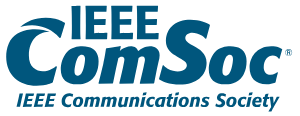The Heuristic for Hardware Dimensioning Considering Tidal Effect
DOI:
https://doi.org/10.14209/jcis.2020.31Abstract
The increase in the volume of services and applications, in addition to the accelerated growth in wireless access demands, represent significant challenges for the fifth generation (5G) of mobile networks. The daily large-scale migration of people in urban centers is another aspect of impact, as it incurs in the Tidal Effect. It generates natural traffic fluctuation throughout the day and makes it difficult for network dimensioning, control and management, resulting in low efficiency in the use of network resources. Based on data extracted from mobile subscribers' movement in the current network architecture, where a database with New York city geolocation information was used, a heuristic with two provisioning approaches (one based on aggregate throughput and one on the number of connected users) is proposed. This heuristic aims to meet the imminent demands given the physical limitation of hardware resources in future mobile networks. Results point that the network provisioning strategy met the scenario's traffic variability, reducing the number of active antennas by 13\% and the Blocked User Probability by 3.7\%, maximizing the Baseband Unit (BBU) efficiency and quantifying the Small Cells (SCs) needed to meet network demands.
Downloads
Downloads
Published
How to Cite
Issue
Section
License
Authors who publish in this journal agree to the following terms:
- Authors retain copyright and grant the journal right of first publication with the work simultaneously licensed under a CC BY-NC 4.0 (Attribution-NonCommercial 4.0 International) that allows others to share the work with an acknowledgment of the work's authorship and initial publication in this journal.
- Authors can enter into separate, additional contractual arrangements for the non-exclusive distribution of the journal's published version of the work (e.g., post it to an institutional repository or publish it in a book), with an acknowledgment of its initial publication in this journal.
- Authors are permitted and encouraged to post their work online (e.g., in institutional repositories or on their website) before and during the submission process, as it can lead to productive exchanges, as well as earlier and greater citation of published work (See The Effect of Open Access).
___________
Accepted 2020-10-19
Published 2020-12-03


